Effect of tumor mutations of the RNA editing factors PUF60 and U2AF65 on the selection of 3′ editing sites.
Ivana Borovská, Jana Královičová
APVV-18-0096, VEGA 2/0057/18
RNA editing is one of the key processes for proper protein production and also represents an opportunity for the generation of protein diversity. It is provided by the assembly apparatus, a complex consisting of more than 100 proteins and regulatory RNAs. Numerous studies of cancer cells, using next-generation sequencing methods, have identified mutations in various downstream factors (ZFs), among others. Among them are U2AF65 and PUF60, which are involved in the interaction with precursor mRNA and play an important role in the recognition of 3′ knockdown sites. Both proteins preferentially interact with uridine-rich sequences through their RRM domains. In our work, we focused on the analysis of 36 nucleotide substitutions in the RRM domains of the above-mentioned knockdown factors that have been identified in patients with different tumor types. Our aim was to determine which variants affect the selection of the downstream sites and the molecular properties of these proteins. Using molecular biochemical methods, we found that 43% (10/23) of U2AF65 and 15% (2/13) of PUF60-independent RRM mutations caused a truncation defect. We also determined the amino acid positions that are essential for proper folding and stability of the analyzed ZFs. These results allowed us to identify novel amino acid residues in RRM domains that are critical for the selection of 3′ knockdown sites and also to develop a relatively simple tool to test for novel tumorigenic variants in the RRM domains of the indicated ZFs.
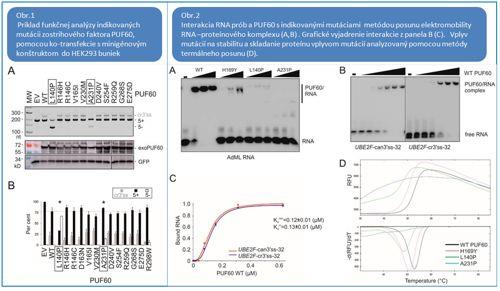
KRÁLOVIČOVÁ, Jana* – BOROVSKÁ, Ivana* – KUBÍČKOVÁ, Monika – LUKAVSKÝ, Peter J. – VOŘECHOVSKÝ, Igor**. Cancer-Associated Substitutions in RNA Recognition Motifs of PUF60 and U2AF65 Reveal Residues Required for Correct Folding and 3 ‘ Splice-Site Selection. In Cancers, 2020, vol. 12, no. 7, art. no. 1865. (2019: 6.126 – IF, Q1 – JCR, 1.938 – SJR, Q1 – SJR). ISSN 2072-6694.
Efficiency of two markers of cell proliferation in the brain of the red-backed zebra finch
Ľubica Kubíková, Justína Polomová, Viktória Mikulášková a Kristína Lukáčová
APVV-15-0077, VEGA 2/0068/20
In neuroscience, the cell division markers 5-bromo-2′-deoxyuridine (BrdU) and 5-ethynyl-2′-deoxyuridine (EdU) are often used in the same individual to mark neuronal populations arising at different times, their migration and incorporation. In this study, we investigated the efficiency of BrdU and EdU markers in the neurogenic ventricular zone of the brain of the red-backed zebra finch songbird. We found that equimolar doses of BrdU and EdU do not label the same amount of cells and BrdU is more efficient. Using doses of 10-225 mg/kg BrdU and equimolar doses of EdU, saturation of the number of detected cells occurred at a dose of 50 mg/kg BrdU and more than 41 mg/kg EdU. These results show that both tracers are reliable for the detection of proliferating cells in the brain of birds, but the numbers of cells labelled with BrdU and EdU cannot be compared.
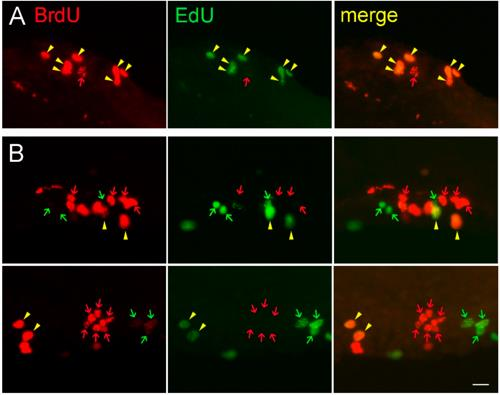
KUBÍKOVÁ, Ľubica* – POLOMOVÁ, Justína* – MIKULÁŠKOVÁ, Viktória – LUKÁČOVÁ, Kristína. Effectivity of Two Cell Proliferation Markers in Brain of a Songbird Zebra Finch. In Biology-Basel, 2020, vol.9, no. 11, art.no. 356. (2019: 3.796 – IF, Q1 – JCR, 1.739 – SJR, Q1 – SJR).
Does dietary intake of herbs and zinc improve the antioxidant and mineral status of lambs with parasitic infection?
Klaudia Čobanová, Zora Váradyová, Ľubomíra Grešáková, Katarína Kucková, Dominika Mravčáková
APVV-17-0297, APVV-18-0131
Parasitic infection caused by the nematode Haemonchus contortus is associated with increased production of reactive oxygen species, changes in the activity of antioxidant enzymes, impaired mineral metabolism and nutrient absorption. The aim of this study was to investigate whether the intake of an herbal mixture with proven antiparasitic activity and/or organic zinc could alleviate the oxidative stress caused by infection. Supplementation of diets with medicinal plants resulted in an increase in tissue catalase activity, whereas Zn intake increased superoxide dismutase activity in the intestinal mucosa. Intake of both additives improved the overall antioxidant capacity of the tissues. The intake of medicinal plants did not negatively affect the absorption of trace elements (Zn, Cu, Mn, Fe) in infected lambs. We observed an increase in serum and liver Zn levels as well as Cu concentration in the duodenal mucosa in animals receiving organic zinc. The results suggest that supplementation of feed with a mixture of medicinal plants containing bioactive compounds and/or an organic source of zinc may alleviate the adverse effects of parasitic infection by stimulating the antioxidant defence system in ruminants.
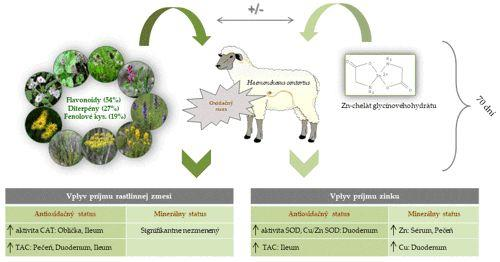
ČOBANOVÁ, Klaudia** – VÁRADYOVÁ, Zora – GREŠÁKOVÁ, Ľubomíra – KUCKOVÁ, Katarína – MRAVČÁKOVÁ, Dominika – VÁRADY, Marián**. Does Herbal and/or Zinc Dietary Supplementation Improve the Antioxidant and Mineral Status of Lambs with Parasite Infection? In Antioxidants, 2020, vol. 9, no. 12, art. no 1172. (2019: 5.014 – IF, Q1 – JCR, 1.100 – SJR, Q1 – SJR). ISSN 2076-3921.
Functional goat milk-based foods and their health benefits
Andrea Lauková, Monika Pogány Simonová, Valentína Focková, Jana Ščerbová, Eva Bino, Anna Kandričáková
APVV-17-0028, APVV SK-PT-18-0005
So far, the available sources on microbiota in goat or sheep milk (especially in milk produced in Slovakia) are insufficient and their detailed identification by detailed sequencing method was lacking. Therefore, the possibility of obtaining a taxonomic overview of the microbiota from the phyla/strain level down to genera and individual representatives is an original contribution not only for basic research, but also enables mainly applied work with beneficial bacteria and their bacteriocins (antimicrobial substances), i.e. to prevent contamination for the preservation of healthy food and thus the health of the consumers. Our department has been studying bacteriocins for decades. Samples of goat milk from 283 animals and samples of 54 sheep lump cheeses were examined. The dominant phylum/strain in goat milk was Actinobacteria (62.8%), followed by Firmicutes (20, 5%), Proteobacteria (7.4%) and Bacteroidetes (6.4%). On the other hand, in sheep lump cheese, the predominant phylum was Firmicutes (60, 9%), followed by Proteobacteria strain (38.2%), Actinobacteria (0.38%) and Bacteroidetes (0.35). However, in both goat milk and sheep lump cheese, representatives of the genus Staphylococcus were the most detected within the phylum Firmicutes. A wide species variability of staphylococci was detected in goat milk (MALDI-TOF spectrometry), where representatives of 14 staphylococcal species were identified within the 37 strains captured from 7 identification clusters/groups. In sheep lump cheese, 5 staphylococcal species were detected from 17 strains belonging to 3 groups. These strains had only a low biofilm forming ability (0.1 ≤A570 <1.0) and importantly, their growth was inhibited by commercial lantibiotic bacteriocins, gallidermin and nisin as well as by most of the bacteriocin-enterocins characterized at our institute (inhibitory activity up to 102 400 AU/ml), thus specifying the possibility of using bacteriocins for prevention in primary milk production as well as in milk products.
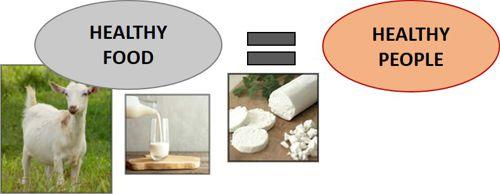
LAUKOVÁ, Andrea** – POGÁNY SIMONOVÁ, Monika – FOCKOVÁ, Valentína – KOLOŠTA, Miroslav – TOMÁŠKA, Martin – DVOROŽŇÁKOVÁ, Emília. Susceptibility to Bacteriocins in Biofilm-Forming, Variable Staphylococci Isolated from Local Slovak Ewes’ Milk Lump Cheeses. In Foods, 2020, vol. 9, no. 9, art. no 1335. (2019: 4.092 – IF, Q1 – JCR, 0.660 – SJR, Q2 – SJR). ISSN 2304-8158.
Lipotoxicity as a limiting factor for biotechnological squalene production in yeast
Zsófia Csáky, Martina Garaiová, Martin Valachovič, Roman Holič, Ivan Hapala
APVV-15-0654, Vega 2/0064/16
Squalene is a triterpenoid synthesized in eukaryotes as the first intermediate specific for sterol biosynthesis. Due to its biological and physicochemical properties, it finds wide use as a food supplement and as a raw material in the cosmetic and pharmaceutical industries. Due to the limited natural sources of squalene, its biotechnological production in yeast is a commercially interesting alternative. Accumulated squalene is stored in lipid particles in yeast. In previous work (Valachovic et al., Biochem. Biophys. Res. Commun. 2016, 469:1123-1128), we demonstrated the toxicity of accumulated squalene in the yeast Saccharomyces cerevisiae with impaired lipid particle function. We investigated the mechanisms of squalene lipotoxicity in a mutant yeast strain incapable of lipid particle formation, in which squalene accumulation was achieved using the antifungal agent terbinafine as a specific inhibitor of the squalene monooxygenase enzyme. We found that squalene accumulation under these conditions causes disruption of plasma membrane functions, e.g., defects in membrane potential formation, increased susceptibility to osmotic stress, and permeability to the rhodamine 6G fluorescence probe. Disruption of plasma membrane viability and permeability is proportional to the amount of accumulated squalene. Thus, disturbances in plasma membrane functionality are involved in the mechanisms of squalene toxicity in yeast. The results show that the storage capacity of lipid particles must be taken into account in biotechnological production of squalene in yeast in addition to maximizing its accumulation. Investigation of squalene toxicity in yeast may also contribute to elucidate the mechanisms of the fungicidal action of terbinafine as a clinically widely used antifungal agent.
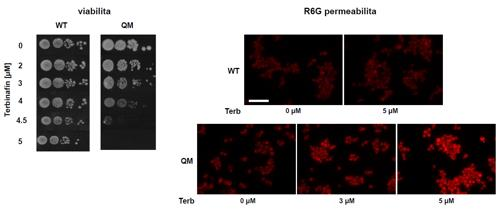
CSÁKY, Zsófia – GARAIOVÁ, Martina – KODEDOVÁ, Marie – VALACHOVIČ, Martin – SYCHROVÁ, Hana – HAPALA, Ivan. Squalene lipotoxicity in a lipid droplet-less yeast mutant is linked to plasma membrane dysfunction. In Yeast, 2020, vol. 37, iss. 1, p. 45-62. (2019: 3.143 – IF, Q2 – JCR, 1.382 – SJR, Q1 – SJR). ISSN 0749-503X.
Effect of mutations in the SCN1A gene on sodium channel functional properties in patients with epilepsy
Ľubica Lacinová, Bohumila Jurkovičová Tarabová
SCN1A, the gene encoding the α1 subunit of the voltage-dependent sodium channel NaV1.1, is associated with the development of various types of epilepsy. Mutations in this gene cause severe epileptic diseases such as Dravet syndrome. Ongoing studies of patients have identified several novel variants of the SCN1A gene whose impact on disease progression is unknown. In this study, we investigated the effect of nine mutations on the function of the NaV1.1 channel expressed in the HEK 293 cell line. Electrophysiological measurements showed that four of the mutations, E78X, W384X, E1587K and R1596C, caused complete loss of channel function and thus zero sodium current . The E788K and M909K mutations resulted in a partial loss of channel function. We observed a decrease in current density, changes in the kinetics of sodium current activation and inactivation, and a slowing of channel recovery from inactivation. The D249E mutation caused a shift of the sodium current activation and inactivation curves toward more negative transmembrane voltages and a slowing of channel recovery from inactivation. We found a similar slowing of recovery from inactivation in experiments with the E78D and T1934I mutations, with the T1934I mutation also causing a decrease in current density. Our functional in vitro analyses confirmed that mutations causing complete loss of channel function are associated with the most severe disease progressions. In contrast, missense mutations that only slightly modify sodium current are associated with milder patient manifestations. Therefore, understanding the molecular mechanisms of epilepsy is a prerequisite for the proper adjustment of treatment.
KLUČKOVÁ, Daniela – KOLNÍKOVÁ, Miriam – LACINOVÁ, Ľubica – JURKOVIČOVÁ TARABOVÁ, Bohumila – FOLTAN, Tomáš – DEMKO, Viktor – KÁDAŠI, Ľudevít – FICEK, Andrej – ŠOLTÝSOVÁ, Andrea**. A Study among the Genotype, Functional Alternations, and Phenotype of 9 SCN1A Mutations in Epilepsy Patients. In Scientific Reports, 2020, vol. 10, no. 1, art. no. 10288. (2019: 3.998 – IF, Q1 – JCR, 1.341 – SJR, Q1 – SJR, karentované – CCC). ISSN 2045-2322.
Expression and distribution of CD151 as a partner of alpha6 integrin on male gametes.
Jana Jankovičová, Petra Sečová, Ľubica Horovská, Katarína Michalková, Jana Antalíková
VEGA-2/0027/20, APVV15-0196 a SAV- AV ČR (18-17)
By analyzing the tetraspanin network in fertilization-related processes, we were the first to detect the presence of tetraspanin CD151 on mammalian sperm in collaboration with the Laboratory of Reproductive Biology of the Institute of Biotechnology of the CAS in Prague. Tetraspanin is localized on spermatozoa during their development in the testis, during maturation in the epididymis and also after ejaculation. The localization of CD151 on spermatozoa is not species specific, unlike the tetraspanins CD9 and CD81, whose importance in the fertilization process has already been demonstrated. We detected CD151 in the so-called equatorial region of the inner acrosomal membrane of sperm (mouse, bull and human), which is a key site in terms of gamete fusion. We also confirmed the interaction of CD151 with integrin α6 subunit in mouse sperm. These findings extend the current knowledge of the structure and dynamics of the multi-molecular complexes acting in different reproductive processes, which we have elaborated in two review articles.
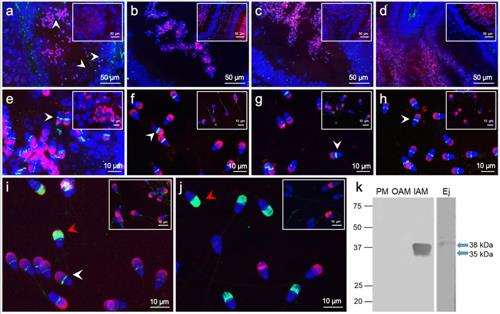
JANKOVIČOVÁ, Jana* – FROLÍKOVÁ, Michaela* – PÁLENÍKOVÁ, Veronika – VALÁŠKOVÁ, Eliška – ČERNÝ, Jiří – SEČOVÁ, Petra – BARTÓKOVÁ, Michaela – HOROVSKÁ, Ľubica – MAŇÁSKOVÁ-POSTLEROVÁ, Pavla – ANTALÍKOVÁ, Jana** – KOMRSKOVÁ, Kateřina**. Expression and distribution of CD151 as a partner of alpha6 integrin in male germ cells. In Scientific Reports, 2020, vol. 10, no. 1, art. no. 4374. (2019: 3.998 – IF, Q1 – JCR, 1.341 – SJR, Q1 – SJR, karentované – CCC).
JANKOVIČOVÁ, Jana* – NEUEROVÁ, Zdeňka* – SEČOVÁ, Petra – BARTÓKOVÁ, Michaela – BUBENÍČKOVÁ, Filipa – KOMRSKOVÁ, Kateřina – POSTLEROVÁ, Pavla – ANTALÍKOVÁ, Jana**. Tetraspanins in mammalian reproduction: spermatozoa, oocytes and embryos. In Medical Microbiology and Immunology, 2020, vol. 209, no. 4, p. 407-425. (2019: 1.961 – IF, Q3 – JCR, 0.860 – SJR, Q1 – SJR). ISSN 0300-8584.
JANKOVIČOVÁ, Jana – SEČOVÁ, Petra – MICHALKOVÁ, Katarína – ANTALÍKOVÁ, Jana**. Tetraspanins, More than Markers of Extracellular Vesicles in Reproduction. In International Journal of Molecular Sciences, 2020, vol. 21, no. 20, art. no. 7568. (2019: 4.556 – IF, Q1 – JCR, 1.317 – SJR, Q1 – SJR, karentované – CCC). (2020 – Current Contents, WOS, SCOPUS). ISSN 1422-0067.
Role of adiponectin in the regulation of glucose transport to early embryos and embryonal carcinoma cells
Ján Burkuš, Janka Babeľová, Alexandra Špirková, Martina Kšiňanová, Veronika Kovaříková, Juraj Koppel, Dušan Fabian, Štefan Čikoš
APVV-18-0389, VEGA 2/0092/19, DAAD (Germany) – SAV (Slovakia) Hormonal dysregulations in a diabetic pregnancy, German Research Foundation GRK 2155 PromoAge, EU COST Action FA1201 Epiconcept.
From the blastocyst stage (just before implantation into the uterine wall), early embryos begin to use glucose as their main source of energy, the transport of which into embryonic cells may also be regulated by signalling molecules from the maternal organism. In our work, we investigated whether adiponectin, a protein secreted by maternal adipose tissue, can influence glucose transport into embryonic cells. In a mouse blastocyst model, we found that adiponectin stimulates glucose entry into embryonic cells, with the glucose transporter GLUT8 being shuttled to the cell membrane. To investigate adiponectin signaling in more detail, we used embryoid bodies generated from the mouse embryonal carcinoma cell line P19, in which we demonstrated that adiponectin stimulates glucose entry into cells in the same manner as in blastocysts. Our results showed that a potential target molecule of adiponectin signaling is p38MAPK kinase in addition to AMPK kinase, and that these two signaling pathways likely proceed independently. The action of adiponectin may become more important in the case of insulin deficiency, whereby adiponectin may maintain an adequate glucose supply to the early embryo, for example in mothers diagnosed with type 1 diabetes mellitus.
BURKUŠ, Ján* – NAVARRETE-SANTOS, A – SCHINDLER, M. – BABEĽOVÁ, Janka – JUNG, JS – ŠPIRKOVÁ, Alexandra – KŠIŇANOVÁ, Martina – KOVAŘÍKOVÁ, Veronika – FISCHER, B. – KOPPEL, Juraj – FABIAN, Dušan – ČIKOŠ, Štefan**. Adiponectin stimulates glucose uptake in mouse blastocysts and embryonic carcinoma cells. In Reproduction, 2020, vol. 159, no. 3, p. 227-239. (2019: 3.206 – IF, Q2 – JCR, 1.201 – SJR, Q1 – SJR). ISSN 1470-1626.
A rare mutation in the CACNA1H gene in patients with amyotrophic lateral sclerosis causes complete loss of Cav3.2 calcium channel activity
Bohumila Jurkovičová Tarabová, Ľubica Lacinová
VEGA 2/0143/19, SAS-CAS project (SAV-18-22)
Amyotrophic lateral sclerosis (ALS) is a neurodegenerative disease manifested by progressive degeneration of cortical, spinal and brainstem motor neurons, leading to muscle wasting and paralysis. The CACNA1H gene encoding the CaV3.2 calcium channel is one of the genes that increase the predisposition for the development of ALS. In this work, we characterized the functional properties of two novel CACNA1H gene variants, c.454GTAC > G and c.3629C > T, which were identified by whole genome sequencing of a small cohort of ALS patients. Deletion of the highly conserved isoleucine 153, ΔI153, in the second transmembrane segment of the CaV3.2 calcium channel in the c.454GTAC > G variant resulted in complete loss of channel function. Moreover, the mutant variant had a dominant-negative effect on the wild-type variant of the channel when they were co-expressed in the cell line. A second variant c.3629C > T with a missense proline to leucine substitution, p.P1210L, showed a milder change in CaV3.2 channel activity. The c.454GTAC > G mutation is the first known pathological CaV3.2 channel mutation that leads to complete loss of channel function. The results of this study suggest that CaV3.2 channel mutations that lead to suppression of calcium current may be risk factors in the development of ALS disease.
STRINGER, Robin N. – JURKOVIČOVÁ TARABOVÁ, Bohumila – HUANG, Sun – HAJIGHASSEMI, Omid – IDOUX, Romane – LIASHENKO, Anna – SOUZA, Ivana A – RZHEPETSKYY, Yuriy – LACINOVÁ, Ľubica – VAN PETEGEM, Filip – ZAMPONI, Gerald W. – PAMPHLETT, Roger – WEISS, Norbert**. A rare CACNA1H variant associated with amyotrophic lateral sclerosis causes complete loss of Ca(v)3.2 T-type channel activity. In Molecular Brain, 2020, vol. 13, iss. 1, art. no. 33. (2019: 4.686 – IF, Q1 – JCR, 1.945 – SJR, Q1 – SJR). ISSN 1756-6606.




